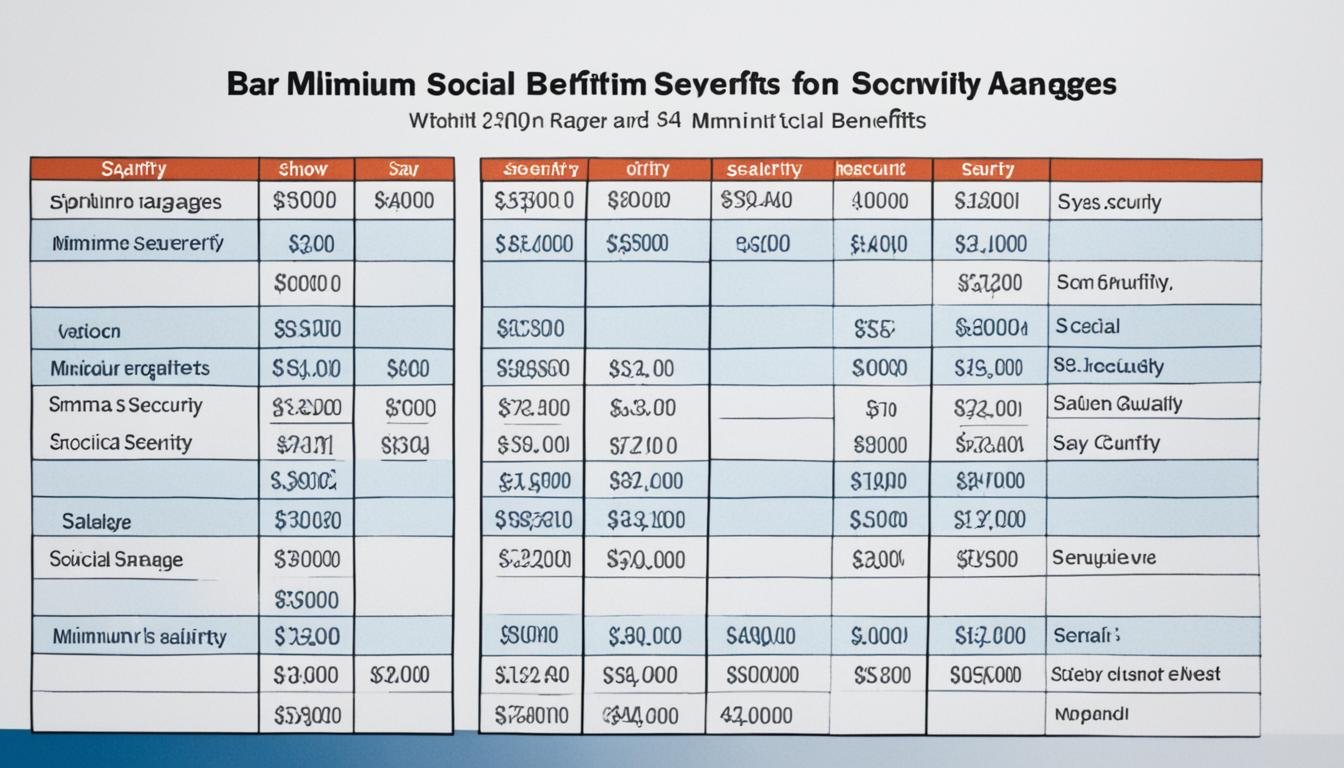Want the Max $4,873 Social Security Benefit? Here’s the Salary You Need
Securing the maximum Social Security benefit can significantly impact your retirement income. But, do you know the salary requirements needed to achieve this goal? In this article, we will explore the salary thresholds and other factors that determine your eligibility for the maximum Social Security benefit of $4,873 per month.
Firstly, it’s important to note that the maximum benefit amount is based on several factors. One key requirement is earning a specific salary. To qualify for the maximum benefit, your yearly wages need to be at least $168,600 or more. However, this figure can change over time, so it’s crucial to stay informed about current Social Security salary requirements.
In addition to the salary threshold, the number of years you’ve worked also plays a significant role. You must have worked for at least 35 years to be eligible for the maximum Social Security benefit. Therefore, it’s essential to consider the length of your career when planning for your retirement benefits.
Lastly, the age at which you claim your retirement benefits is another crucial factor. To qualify for the maximum benefit, you need to wait until you reach age 70. Waiting until this age ensures that you maximize your benefit amount and secure the highest possible monthly payment.
Understanding these salary requirements and the other factors that influence your Social Security benefit can help you plan effectively for retirement. By aiming to meet the necessary criteria, you can work towards achieving the maximum benefit amount and ensure a more financially stable future.
Determining Your Social Security Benefit
Your Social Security benefit is determined by three components: your yearly wages, your age at the time of claiming retirement benefits, and the number of years you’ve worked. Making informed decisions regarding these factors can help you maximize your Social Security retirement benefit.
Yearly Wages
The amount you earn each year directly impacts your Social Security benefit. To qualify for the maximum benefit, you must earn at least $168,600 or more in a year. However, please note that this amount is subject to change and has increased over the years. By earning a high salary, you increase your chances of securing a higher retirement benefit.
Age at Claiming Retirement Benefits
The age at which you choose to claim your Social Security retirement benefits can affect the amount you receive. Your full retirement age (FRA), which ranges between 65 and 67 depending on your birth year, plays a crucial role in determining when you can claim your benefits. To qualify for the maximum benefit, it’s generally recommended to wait until you reach age 70 to start collecting your benefits.
Number of Years Worked
In order to qualify for the maximum Social Security retirement benefit, you must have worked for at least 35 years. Your benefit is calculated based on your highest 35 years of earnings. If you have not worked for the full 35 years, zeros will be factored in, therefore potentially reducing your overall benefit amount. Increasing the number of years you work can have a positive impact on your benefit.
By understanding and optimizing these factors, you can work towards maximizing your Social Security retirement benefit. It’s crucial to plan and make informed decisions based on your individual circumstances. Consider consulting a financial advisor to ensure you make the most of your retirement planning and take advantage of the available strategies.
Strategies to Maximize Your Social Security Benefit

When it comes to maximizing your Social Security benefit, there are several strategies you can employ to ensure you receive the maximum amount possible. By taking advantage of tools such as a Social Security calculator, understanding the income threshold, and being aware of the Social Security earnings limit, you can optimize your benefits and secure a higher retirement income.
One effective strategy is to utilize a Social Security calculator to estimate your benefit based on different claiming ages. This tool provides valuable insights into the potential amount you can receive at various retirement ages. By inputting your information, such as your earnings history and the age at which you plan to start claiming benefits, the calculator will provide an estimate of your future Social Security income. This can help you determine the optimal age to start claiming benefits in order to receive the maximum amount, aligning with your financial goals and needs.
Another important consideration is the income threshold and the Social Security earnings limit. If you continue to work and earn income while receiving Social Security benefits before reaching your full retirement age, your benefits may be reduced. It’s crucial to be aware of these thresholds to avoid any surprises and make informed decisions. However, it’s important to note that once you reach your full retirement age, there is no earnings limit and your benefits will not be affected, allowing you to maximize your Social Security income without any reduction.
“Utilizing a Social Security calculator and understanding the income threshold and earnings limit are key strategies to ensure you receive the maximum Social Security benefit.”
Example Scenario:
Let’s consider an example scenario highlighting the impact of these strategies. John, who is 62 years old, plans to retire in the near future. He wants to maximize his Social Security benefits and maintain his current income level. Using a Social Security calculator, John discovers that by waiting until his full retirement age of 67 to claim benefits, he can receive $2,000 per month. If he were to claim benefits at age 62, his monthly amount would be reduced to $1,400.
Furthermore, John is aware of the earnings limit and decides to continue working part-time until reaching his full retirement age. By doing so, he can earn additional income without any reduction in his Social Security benefits.
By implementing these strategies, John successfully maximizes his Social Security benefit by waiting until his full retirement age to claim benefits and avoiding any earnings limit restrictions. This ensures he receives the maximum amount possible, providing him with a higher retirement income to support his future financial needs.
Summary:
In summary, using a Social Security calculator, being aware of the income threshold, and understanding the Social Security earnings limit are powerful strategies to maximize your Social Security benefit. By taking advantage of these tools and aligning your claiming age and income, you can optimize your benefits and secure a higher retirement income. Remember, careful planning and informed decisions are key to achieving the maximum Social Security benefit.
Planning for Retirement Healthcare Costs

Planning for retirement healthcare costs is essential to ensure financial security during your retirement years. One option is to rely on Medicare, which is available to all seniors aged 65 and older. Medicare consists of Parts A and B, but you may also consider adding a Part D plan for prescription drug coverage.
Another option is to explore Medicare Advantage plans, which offer additional benefits but may have more limited provider networks. If you prefer the flexibility of Original Medicare, you may also consider purchasing a Medicare supplement or Medigap plan to cover gaps in coverage.
In addition to insurance options, it’s important to save for retirement healthcare costs. Personal savings are necessary to cover out-of-pocket expenses and to account for potential increases in healthcare costs due to inflation.
Planning for retirement healthcare costs is crucial to ensure a secure financial future. By considering options such as Medicare, Medicare Advantage, and Medigap plans, you can find the coverage that suits your needs. Additionally, building personal savings to cover potential expenses and account for inflation is vital. Take control of your retirement health insurance to enjoy peace of mind during your golden years. For expert insights on managing your finances and securing insurance, delve into this comprehensive resource
Maximizing your retirement income is a crucial aspect of retirement planning. One key element of this strategy is to maximize your Social Security benefit. While achieving the maximum benefit might require a higher salary and a longer working career, there are effective strategies to help you optimize your retirement income.
You should consider and evaluate your individual financial situation, including your savings and investment plans, to ensure a comfortable retirement. Understanding the salary requirements and implementing strategies to maximize your Social Security benefits can greatly contribute to securing a higher retirement income.
It is important to start planning early and seek guidance from a financial advisor who can help you make informed decisions about your retirement savings. By taking proactive steps and making adjustments when necessary, you can set yourself on a path towards a financially secure retirement.
Remember, retirement planning is a continuous process. Stay engaged, stay informed, and take control of your retirement income to enjoy a fulfilling and worry-free retirement.




